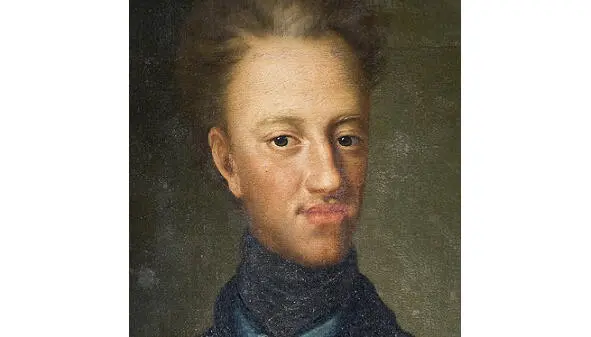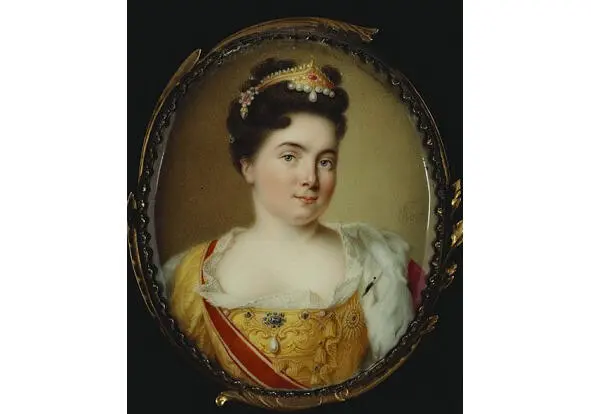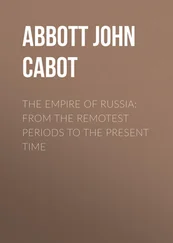…During reconnaissance, on his birthday, Karl is wounded in the foot of his left leg. Perhaps this circumstance affects the clarity of his thinking during the battle. The plan of the Swedish monarch is to attack in the early morning, more precisely at night, when the advantage of the Russians in artillery comes to naught. At 2 o’clock in the morning, July 8, 1709, having lingered somewhat during the formation, the Swedish army moved to the battlefield.
Sheremetev’s idea is a novelty in military affairs of that time. The main point is to create a chain of six fortifications located at a distance of a shot between the forests. Two more redoubts are being built behind this line. The attackers would have to either storm them, or go to the main army, exposing the flanks to fire. An innovative, albeit dubious, idea, when applied with the irritation of a wounded king, is quite successful.
At about 3 a.m. the cavalry of Charles the Twelfth slipped between the redoubts almost without loss. She gets involved in a battle with the Russian cavalry, which exposes the enemy to the weapons and artillery fire of the fortifications. Trying to help the Swedish infantry get bogged down in the attack of the redoubts and come under fire from the camp. Peter gives the order to withdraw the cavalry. She, turning in the sight of the enemy, gallops three kilometers to break away from the pursuit. This maneuver creates the impression of the defeat of the Russians in the Swedes’ camp.

Charles the Twelfth (1682—1718), opponent of Peter the Great
Both sides take time out to regroup and continue the battle. At nine o’clock the Swedes attack again. This time, captured or blocked redoubts do not divide the armies. The forces of the opponents are. Russians – 25,400 infantry, 9—12,000 noble cavalry, with 72 guns, Swedes – 8,300 infantry, 9,000 cavalry, 4 cannons used for signaling. This is followed by a frontal three-hour battle. The career infantry of Charles the Twelfth sees a higher purpose in battle. Accustomed to adversity, Puritans march into battle, singing religious hymns. At one time, Protestant Swedes were the best fighters in Continental Europe. An important role in the battle is played by the Russian core, breaking the Swedish king’s stretcher. The rumor about the death of the commander discourages the army. The Swedes retreat to the wagon train, where 7,000 cavalrymen and several thousand Cossacks are in reserve, then to the crossing over the Dnieper. Ahead of the retreating Karl with only a few dozen retinues. He manages to escape to the Ottoman allies, now Ukrainian Bendery. Here the king, without getting out of bed, will appeal to the Swedish government to send new troops for a year. The remaining army, including 12,575 soldiers and 3,000 non-combatants, surrenders.
Losses of the parties in the battle. Swedes – 9,300 killed, 15,000 prisoners. Russian army – 1400 dead. Captured Swedes are marching defeated through the streets of Moscow. They will return home, due to the ongoing war, only after many years.
In 1710, without waiting for the end of the armistice, wishing to return Azov as soon as possible, and in response to Peter’s too zealous demands to expel Karl from Bendery, Turkey declares war on Russia.
It occurs to Peter that the peoples of Wallachia and Moldavia will be happy, having got rid of the Ottomans, to accept his protectorate, or even complete absorption. In March 1711, taking in addition to the 80-thousandth army, a friend of his heart, Ekaterina Alekseevna, deep in position, he set off on the Prut campaign. Already in mid-July, from the raids of the Tatars, disease, lack of food and water, the army is reduced to 56 thousand. Even before the start of major battles, it becomes clear that it is time to retreat. An almost 170,000-strong Turkish army and a 20,000-strong detachment of the Crimean Tatars press the Russian army against the Prut River. The military camp is under continuous fire from 160 cannons. The Grand Vizier is quite complacent. For a bribe, he agrees to the terms of peace proposed by Peter. Manages to bargain for more than the king expects, already quite willing to lose all northern conquests. This is the return of Azov to the Turks, the destruction of Taganrog and other Russian settlements near the Sea of Azov. The best ships of the southern fleet are sold to the Sublime Port. The rest have to be set on fire.
…In 1712 Peter will be married to his mistress Martha Skavronskaya, the widow of a Swedish dragoon, now Catherine.
In 1718, the son of Peter the Great, Alexei, takes refuge in one of the castles of Naples. The Emperor of the Holy Roman Empire allows the emissary of the Russian monarch to speak with the Tsarevich. The diplomat presents false evidence that the extradition of Alexei by the Austrian government has already been decided. The prince agrees, not knowing that his request for help to Charles the Twelfth has received the king’s approval. The entire Swedish army could be given to the rightful heir. At home, Alexei is immediately arrested. He dies in prison from torture, stroke, exacerbation of tuberculosis, it is not known exactly. Three priests, with whom he conferred, are killed. The Tsarevich abdicates the throne in favor of the son of Peter the Great from his marriage to Catherine, as well as Peter, who later dies at the age of four. His only son, born in a marriage with the German princess Charlotte, again Peter, would later become the Russian emperor.
.In the same year, the first full-fledged census («revision») of the population starts. Some lists include peasants and disenfranchised courtyard slaves. The idea is to raise the latter to the level of the former. But it turns out differently. The landlord must pay tax on each servant. It’s clear. But the peasants, who have their own means of production, and the skills that make it possible to earn money, wherever, now have to pay through the landlord. A person is freed from the need to personally lay out one and a half rubles for himself and his sons every year, but falls into real slavery to the nobleman, the head of the accounting department.
…Peter the First roughly understands what happened. It even seems that he does not like this turn of events. But to stop what is happening, in view of the monolithic opposition of the nobles, the powerful sovereign is no longer able to.
In 1721, the Nystadt Peace Treaty was signed between Russia and Sweden. Russia returns the conquered Finland, pays compensation for the rest of the northern territorial acquisitions. At the same time, Peter takes the title of emperor.
In 1722 Peter the Great carried out the Persian campaign. The reason was attacks on merchants and a Russian reconnaissance detachment. The global goal is to restore trade routes to Central Asia and India by conquering the Caspian Sea and adjacent territories. India itself is also a mouthwatering bite. The forces of the Russian army – 30 thousand people, 200 guns, 270 transport ships. Derbent, Baku, the territories of modern Dagestan and Azerbaijan have been under the rule of Peter the Great for only ten years. In 1732—1735, in order to avoid a new major war with the Ottoman Empire, these areas were returned to Persia

Catherine the First. She is Marta Samuilovna Skavronskaya, after the adoption of Orthodoxy – Ekaterina Alekseevna Mikhailova (1684 – 1727). For female wisdom (one might say – not for a model appearance), she is acclaimed by Field Marshal Sheremetev, and then by Alexei Menshikov. In 1703, during a visit to a friend, Peter the Great notices Martha and takes her to his place.
Читать дальше














